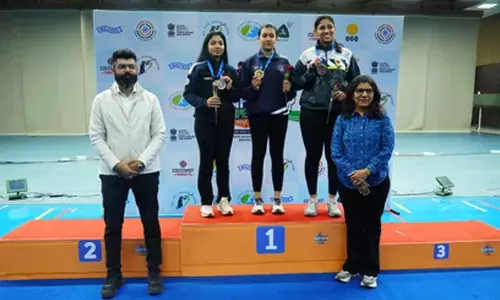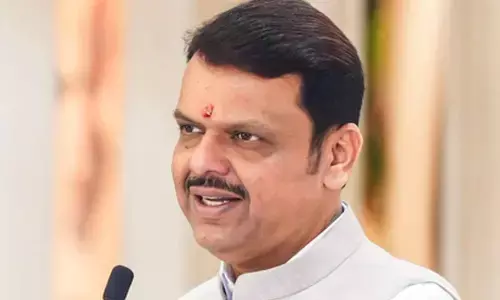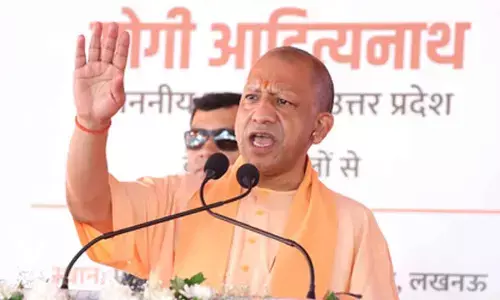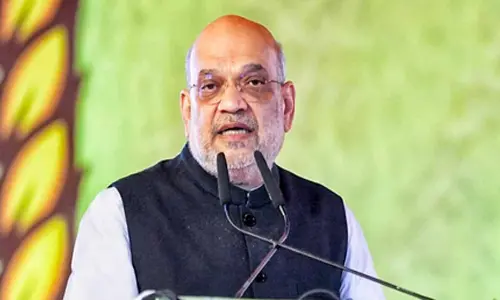IS INDIA HALF DEMOCRATIC…?

Ampashayya Naveen: IS INDIA HALF DEMOCRATIC…? The presentation of democratic system of India in spite of so many odds is the cynosure of all the countries of the world.
.jpg) At last, the no-holds-barred election campaign in Telangana has come to an end. I have seen several elections since 1952 when the first general elections with universal suffrage had taken place. But never before, I have seen such an election which is taking place now. This election process is witnessing full of national and regional parties, many contesting candidates, many promises, many freebies, allegations and counter-allegations, abuses and counter-abuses, sound and fury etc. Every candidate and every political party was chanting the mantra of ‘Telangana’. Every political party is promising us that they are going to convert it into a Heaven. All the contesting candidates irrespective of their political affiliations are claiming that because of their efforts only the separate state of Telangana has become a reality. The creation of separate state of Telangana seems to be ‘Be All and End All’ for all players in this game of elections. Once these elections are over, we don’t know whether the party which forms the government can succeed in keeping up the given promises.
At last, the no-holds-barred election campaign in Telangana has come to an end. I have seen several elections since 1952 when the first general elections with universal suffrage had taken place. But never before, I have seen such an election which is taking place now. This election process is witnessing full of national and regional parties, many contesting candidates, many promises, many freebies, allegations and counter-allegations, abuses and counter-abuses, sound and fury etc. Every candidate and every political party was chanting the mantra of ‘Telangana’. Every political party is promising us that they are going to convert it into a Heaven. All the contesting candidates irrespective of their political affiliations are claiming that because of their efforts only the separate state of Telangana has become a reality. The creation of separate state of Telangana seems to be ‘Be All and End All’ for all players in this game of elections. Once these elections are over, we don’t know whether the party which forms the government can succeed in keeping up the given promises.
The presentation of democratic system of India in spite of so many odds is the cynosure of all the countries of the world. This is a gigantic task for the Election Commission to successfully complete the process. When the first Prime Minister of India, Pt Jawaharlal Nehru introduced election with universal suffrage in 1951, many intellectuals and political analysts had expressed their apprehensions about the success of this experiment in a country where 84% of its population was illiterate. They warned that it would be misused as the people didn’t know what a vote is and its relevance to their lives. In a country where poverty is rampant, caste system is all-pervasive and religious sentiments are strong, the candidate contesting the elections can easily influence the voter with money and alcohol. Caste and religion will be brought to influence the voters. In spite of all these warnings, the 1st general elections were held and since then nearly 16 general elections took place so far. Historians say that the democracy had come to stay in India despite a plethora of loopholes in it. For good or bad, India is considered as the largest democracy in the world. Undoubtedly the 1st general elections had laid down strong foundation for the establishment of democracy in India.
Two years after India’s independence in Aug1949, an autonomous Election Commission was set up and in March 1950, Sukumar Sen was appointed as the first Chief Election Commissioner. In April 1950, the Representation of People Act was passed. Noted historian Ramchandra Guha says that the first general election 1951-52 was, among other things ‘an act of faith’.
At stake were 3,764 seats: 484 parliament and remaining for provisional Assemblies. About 2,24,000 polling booths were constituted; 20 lakh steel ballot boxes were made with 8,200 tonnes of steel; 16,500 clerks were appointed to type and prepare electoral rolls. These electoral rolls had consumed 3,80,000 reams of paper to prepare 62,00,00,000 of ballot papers. 56,000 presiding officers were chosen, 3 lakh policemen were deployed on duty to see that the voters cast their votes freely and without any fear. As Guha wrote in his book ‘India after Gandhi’, “It was horrendously difficult to reach every nook and corner of India to conduct the elections particularly for reaching many hilly areas. Bridges were temporarily constructed across rivers to reach those areas. A tricky problem was that the diffidence of many women in Northern India to give their names for inclusion in nominal roles. Instead of giving their own names, they wished to register themselves as somebody’s mother, wife or daughter. Sukumar Sen, Commissioner of ECI was outraged by this habit of Indian women. He felt that it was a curious and senseless relic of the past. Because of this reason, the names of around 28 lakh voters were to be struck off.”
Main political parties in the 1st general elections were Indian National Congress led by Nehru, KMPP party led by J B Kriplani, Socialist Party led by Jayaprakash Narayan, Jan Sangh led by Shyam Prasad Mukherjee. The election campaign was mainly through documentary films and All India Radio. Nehru alone covered entire country from one end to other in a space of 9 weeks. He travelled 25,000 miles (1800 miles by air, 5200 by car, 1600 by train and 90 miles by boat). He addressed 300 mass meetings. He spoke to about 20 million people directly with an equal number merely had his darshan. The results were as expected; Congress won 364 parliament seats out of 484 and 2, 247 out of 3, 280 assembly seats. Congress had polled 45% of the total votes but won 74.4% of parliament seats. For assembly congress had polled 42.4% of total votes polled but won 68.6% of seats. This disparity between the total votes polled and the total seats won was because of the multi party system of Indian democracy. This disparity continues even to this day. Many critics of Nehru pointed out that in spite of enormous charisma and popularity of Nehru, his party could not get the support of 50% of the electorate. Because of the multi party system, a party with just 30% of polled votes can form the Government. Unless a two-party or three- party system comes into existence, like in England, this will continue.
After the fall of the Congress party to win a simple majority in parliament since 1989, a period of coalition governments had become the order of the day. There seems to be no end to these coalition governments with a curious conglomeration of different political parties with different ideologies. Can we say India is fully democratic or half democratic?














